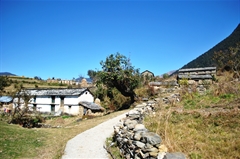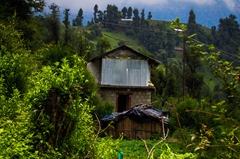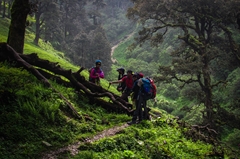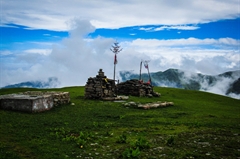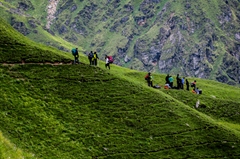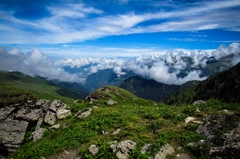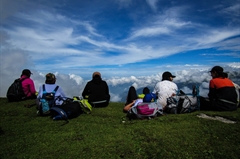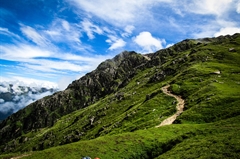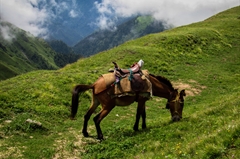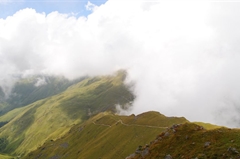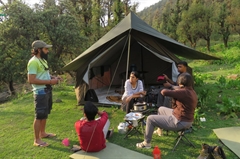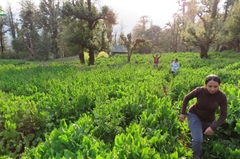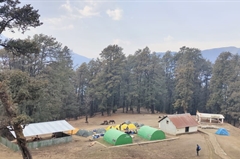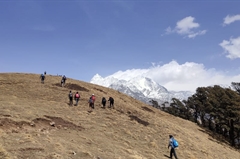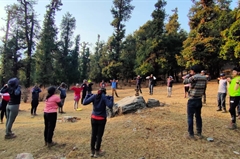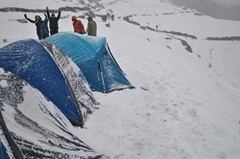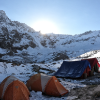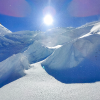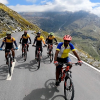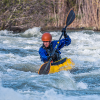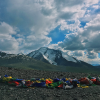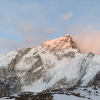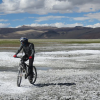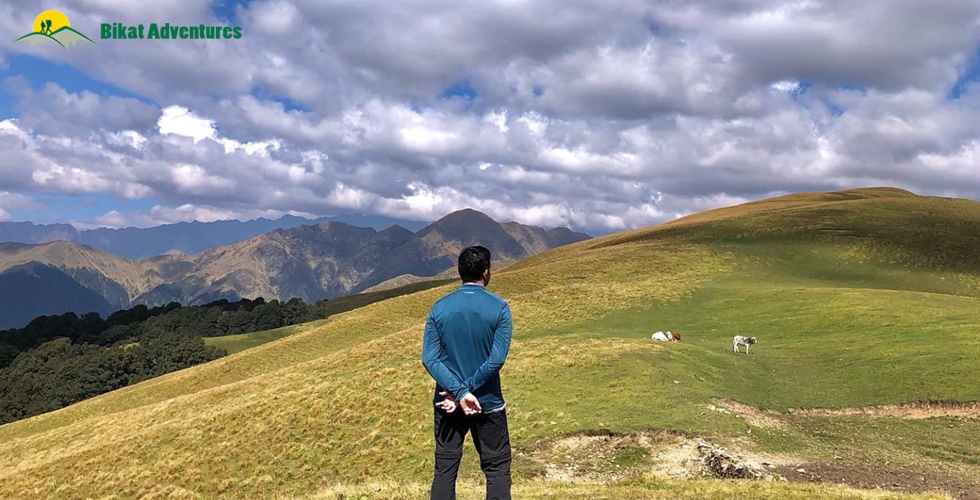
Ali Bedni Bugyal Trek
The Next Chapter of Roopkund
Available Batches
Available Batches
Brief Description
Brief Itinerary
Detailed Itinerary
Day 1
Arrive at Lohajung (2,243M)
Distance: 294 kms (Dehradun to Lohajung)
Duration: 11-12 hours drive
If you are driving with us, we begin our journey to Lohajung from ISBT Dehradun latest by 7 AM. It is located at a distance of 294 km from Dehradun and would take about 11-12 hours to cover. The landscapes throughout this drive are striking.
(Note: In case you plan on reaching Lohajung on your own, this article will come handy should you need any assistance: Click here)
The journey begins with a drive uphill that takes us through the Kumaon region into the Himalayan Belt of Garhwal. The roads here are extensive and the Shivalik ranges can be spotted at the horizon. The setting is tranquil; the river accompanies you swiftly throughout this stretch.
It gets exciting from here on. We pass through three of the five iconic confluences of the Alaknanda river (Devprayag, Rudraprayag and Karnaprayag) on the way to Lohajung.
A beautiful showcase of tradition, Devprayag, is the first confluence we pass by. It is the converging point of the Bhagirathi and Alaknanda rivers. You can clearly see the turquoise of one merging with the teal of the other in the valley below.
Forty kilometers from this point, we reach the historic town of Srinagar on the banks of Alaknanda; Rudraprayag lies further ahead from here. It is the confluence of rivers Mandakini and Alaknanda.
About 33 km from Rudraprayag is the third confluence of Karnapraya, the meeting point of the Alaknanda and the Pindari River. Each confluence is unique in its setting and is a sight to behold!
Lohajung, located in the Chamoli district of the Garhwal Himalayas, is 86 km from Karnaprayag. Expect to reach Lohajung by late evening around 8-9 PM. If you are in need of any basic clothing or gear for your trek, you are likely to get it in Lohajung.
Tonight is in guesthouses; our last day of warm beds and hot meals before we leave for the trek tomorrow.
Day 2
Lohajung (2,243M) to Tolpani (2,810M)
Distance: 7.5 kms
Duration: 4-5 hours
First day of our actual trek and we are going to one of the most beautiful campsites of the trek already – the jungles of Tolpani. We leave as early as 8 AM after an early breakfast. A 6 km drive on a bumpy road gets us to Kulling which is the trailhead of our trek. By 0830 AM we are all set to start our 7.5 km hike for today.
The day starts by going downhill for about 1.5 km, all the way to the clear waters of Neel Ganga. This 200M descend should take us 40 mins to cover. Once all the way down to the river, we cross over to climb the slopes on the other side. As you start to climb on this 400M long incline which brings us to Didna village, we see small hamlets stationed at the border of massive fields farming the red grain which goes by the name of Ram Dana and is a popular grain in this entire belt. On reaching Didna, we would have already covered 5 kms of distance for today and walked through stone-paved and dirt trails, oak forests and open lands.
A little distance further from Didna, we reach a clearing which can double up as our lunch point. From here on, the terrain alternates between ascents and flat regions through thick forests of Oak with the light filtering in from the little gaps in the canopy above. The winds rustle through the trees as loud as the rustle from the dry leaves on the forest floor under our feet. With a total ascent of 820M, we reach our campsite (a small clearing at the edge of the thick forest) in a little over 4.5 hours.
We reach our very first campsite on the trail just in time for some hot snacks and piping hot tea which is perfect to balance the chill in the air.
Day 3
Tolpani (2,810M) to Abin Kharak aka Ali Bugyal (3,300M)
Distance: 6.5 kms
Duration: 4-4.5 hours
Onwards to the first of the twin bugyals today, we start by around 09:00 AM after the sun hits our camp. We continue on the terrain like yesterday, zigzagging uphill through the thickly forested land. The incline takes us close to 200M up to a small patch of flat land. This respite is short-lived however, before we hit another patch of 200M incline with the rustle of the leaves under our feet, the smell of forest in the air and a faint glimpse of the mountain peaks on the other side.
After the second patch of incline, the views suddenly open up and we are out of the forest as the rest of the world comes into view. Snow-capped mountains, the biggest of the Garhwal range, now stand tall to our left. Only small and fragmented patches of forest now. A hundred and fifty meters more, and the view opens up on both our sides with Trishul and Nanda Ghunti on one side and the rest of the range on the other including giants such as Chaukhamba. This is the start of the meadow. This is when we become fully aware of the expanse of the meadow as it spreads out far and wide in all directions around us. It is smaller humps from here on all the way to the campsite. The trail goes up and down on this open land with no respite from the winds knocking you silly from all directions – try to do your best to hold your ground!
The highest altitude we hit today is 3450M. The campsite is a 100M descent from here. The lower altitude provides a sanctuary from the wind by the way of being covered by a rock face on one side. With a total ascent of 650M for the day, expect to reach the campsite by late afternoon.
There are no water sources on our way today, remember to carry enough water from the campsite to last you the entire day.
You have the rest of the evening to explore the land and the meadows we left behind.
Day 4
Ali Bugyal (3,300M) to Gehroli Patal (3,196M) via Bedni Top (3,803M)
Distance: 6.5 kms
Duration: 4-4.5 hours
The morning view from this campsite is nothing if not magical! Wake up to the sun painting the mountain a bright shade of honeydew right outside your tent.
After a mesmerizing introduction to one of the two bugyals yesterday, we head to our second climax today; Bedni Top which is also the highest altitude of the trek. We start early at 08:00 AM so that we can spend as much time on the top as possible.
We start off by climbing the 100M we descended yesterday to get to our campsite. This ascent brings us to the ridge from yesterday which we continue on for close to 300M uphill. This is gradual and pleasant. This should take us close to 1-1.5 hours. After this gradual ascent, we reach the base of the steep climb which will bring us to the best vantage point of the trek; Bedni Top.
A one kilometer hike to cover 210M of steep ascent is a bit strenuous but is only an hour long affair. If the climb didn't, the view from the top is sure to knock the air out of you. With a small stone temple with lots of prayer flags as is the tradition of any mountain top, it is time to face Trishul and Nanda Ghunti head on. With their full face jutting out of the ground; it is the first time you feel the full force of these massive peaks as they stand unmoving right in front of you. Don't be surprised if you find yourself glued to the ground, unable to move; these peaks have a way of doing that to you!
The wind here is free and untamed too, remember to cover up well. The descent down should only take about half an hour and we head back to our campsite after a full day.
There are no water sources on our way today, remember to carry enough water from the campsite to last you the entire day.
Day 5
Gehroli Patal (3,196M) to Lohajung (2,243M) via Wan Village
Distance: 6.5 kms
Duration: 3-3.5 hours
We have one more highlight before we end this trek. We start our day by around 08:30 AM after a wholesome breakfast. Since we are heading back down to our base village and losing altitude, today’s trek is mostly downhill on a stone-paved path through the enchanting oak forests. Within one hour of the trek, we start hearing the soothing sound of the river and 15 minutes from now, we start seeing it as well. It is only a matter of minutes before we are at 2620M and by the river side soaking our tired feet in its refreshing waters. We have already covered 2.5 kms for today.
Half an hour and a 150M ascent later, we reach the Rankandhar village which is at a vantage point to give you a view of small hamlets with step-farming fields stippled across mountain faces in all directions. The trail towards Wan village is full of Deodar trees. After 2 kms and a one hour descend, we are down to the trailhead from where we get our drive back to Lohajung to end the loop of this trek. It is a 40 minute drive at max to Lohajung where we will spend the night in the guest house. Expect to reach well in time for lunch.
Day 6
Drive to Dehradun
Distance: 294 kms
Duration: 11-12 hours drive
After breakfast, we start for Dehradun at 9 AM. The journey once again takes us through the three confluences of Karnaprayag, Rudraprayag and Devprayag, only now, in reverse order. Expect to reach ISBT Dehradun by 8PM.
In case, you plan on traveling back to Delhi the same night, consider booking a bus that starts at around 11-12 PM to account for any delays we might encounter on the way.
What's Included
- Meals
- Forest Permits/Camping Charges , if any (Upto the amount charged for Indian nationals)
- Tents, Sleeping bags, mats
- Technical equipment ,Safety Equipment.
- Trek guide, cook, helpers, porters & mules for carrying common luggage.
- Services of a certified mountaineer as trek Leader.
- 2 Nights Hotel stay in Lohajung.
What's Not Included
- Meals during road Journeys.
- Any expense of personal nature.
- Any expense not specified in the inclusion list.
- Transportation to & from Lohajung.
Are you Eligible for this Adventure?
Ali Bedni Bugyal Trek is ideal for beginners who want to get introduced to the exquisite beauty the Himalayas have to offer.
BRS Level Required
Although fairly easy, any kind of activity in high altitude requires a certain level of physical fitness and endurance for it to be a pleasant experience.
If you do not know what level of BRS trek would suit you best, worry not! Fill out this Form:
we will send you a progression chart to help you comfortably get out of your comfort zone in order to level up and ultimately reach your highest potential in the big, bad world of outdoor adventure.
Packing List
This is a list of essential items for individuals doing the trek with Bikat Adventures. This list contains only those items which the participants are required to bring with them. The list excludes those items which are provided by Bikat Adventures on the trek. We have divided the items into five categories. All the items in the list are essential except for those marked as optional.
Trekking Gear
- Ruck sack bag with rain cover. Qty -1
- Day Pack Bag - Recommended for treks with summit day
- Head Torch with spare Batteries. Qty -1
- U V protection sunglasses. Qty -1 Here is how you can choose the best sunglasses for trekking.
- Water Bottles: 2 bottles of 1 liter each
Footwear
- Non-skid, deep treaded, high-ankle trekking shoes Qty -1
- Pair of light weight Slipper/Sandals Qty -1
Clothing
- Quick Dry Warm lower or Track Pants. Qty - 2
- Full sleeves T-shirts/ Sweatshirts. 1 for every 2 days of trekking
- Pair of thick woolen socks. 1 pair for every two days of trekking
- Thermal Body warmer Upper & Lower. Qty-1
- Undergarments. Qty - 1 for every day of trekking
- Warm jacket closed at wrist & neck .Qty-1
- Full sleeves sweater. Qty -1
- Rain wear ( Jacket & Pants ) . Qty-1
- Pair of waterproof, warm gloves. Qty-1
- Woolen cap. Qty-1
- Sun shielding Hat. Qty -1
Toiletries
- Personal toiletries kit (Small Towel, Toilet paper, paper soap, Bar soap, toothbrush, toothpaste, cold cream, etc.)
- Sun screen lotion small pack. Qty -1 Here is your Sun Protection 101 to stay safe in the bright sunny outdoors.
- Lip Balm small pack. Qty-1
Utensils
- Small size, Light weight & Leak proof lunch box. Qty-1
- Plate. Qty- 1
- Spoon.Qty-1
- Tea/Coffee (plastic) Mug.Qty-1
Miscellaneous
- Camera (Optional)
- Carry your medicines in plenty in case you have any specific ailment. Consult your doctor before joining the trek.
- Dry fruits, Nuts, Chocolate bars (Optional)
Frequently Asked Questions
Why Bikat?
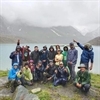

Small Group Size
Our batch sizes are capped at 15 for smaller treks with the trek leader and trekker ratio of 1:8. This ratio, in our years of experience, has proven to deliver the best trekking experience for individuals as well as groups. Capping the size of the group ensures individual attention to each trekker so that no signs of distress or need during the trek go unnoticed. It also helps to form a more cohesive cohort with better group energy which helps define the rhythm and pace of days on the trek. As you go higher up on the BRS scale, since the stakes are higher, expeditions have an even smaller group size with the ratio of expedition leader to climber set at 1:2.
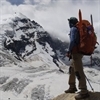

Qualified Trek Leaders
We follow a rigorous regime of hiring and training our experts in the field. Each trek leader is a certified mountaineer with years of experience in the field. In addition to their qualification, they also go through practical and situational training to tackle any and all kinds of sudden conditions that may present themselves on the ground. Being unpredictable is the core nature of the mountains but being ready for any circumstance as best as possible is a controllable asset that we try to nurture. Our field experts are also trained in basic medicine and first-aid response. Watch: Forerunners - The Making of A Trek Leader At Bikat Adventures
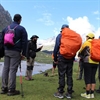

Guided Progression
Since Bikat Adventures is a learning-based organization, we help you climb up the ladder of difficulty within the sphere of outdoor adventure systematically. Our on-ground training modules are designed to handhold you through the upskilling process so that you are ready to take on bigger challenges.
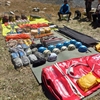

Equipment Quality and Check
All the gear used on our treks and expeditions is tried and tested, maintained for good quality, and is overall top-notch in quality and condition. We are continually looking to obtain the best of everything there is in the market so as to ensure optimum safety.
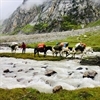

Support Systems
Along with the staff you see on-ground, we have a team of superheroes working in the background to give you the best experience possible. Our background team also comprises local staff from each area who know the region best. Having local support helps with studying the area, pre-planning, execution, and in receiving timely support in case of emergencies in these remote locations.
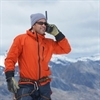

Communication
Our on-field staff is in constant contact with our teams based in primary locations so as to eliminate any avoidable delay in reaching additional help and support when required. We try to use the best tools for communication available, including satellite phones, in regions where they are not restricted.
What our customers Say
Cancellation Policy
Cash refund
Cancellations up to 60 days prior to departure date
Between 60 days upto 30 days prior to departure date
Between 30 days upto 10 days prior to departure date
Less than 10 days prior to departure date
Voucher refund
Cancellations up to 30 days prior to departure date
Between 30 days upto 15 days prior to departure date
Between 15 days upto 10 days prior to departure date
Less 10 days prior to departure date
- Cash refund is applicable only in case of bookings made without using any promotional offer code or Cancellation Vouchers or Discounts
- This is only a brief of cancellation terms. For finer details please refer Detailed Cancellation Policy.
Blog Posts
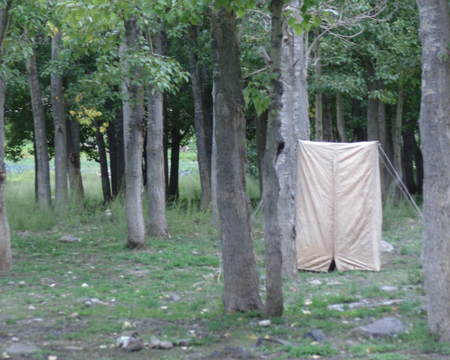

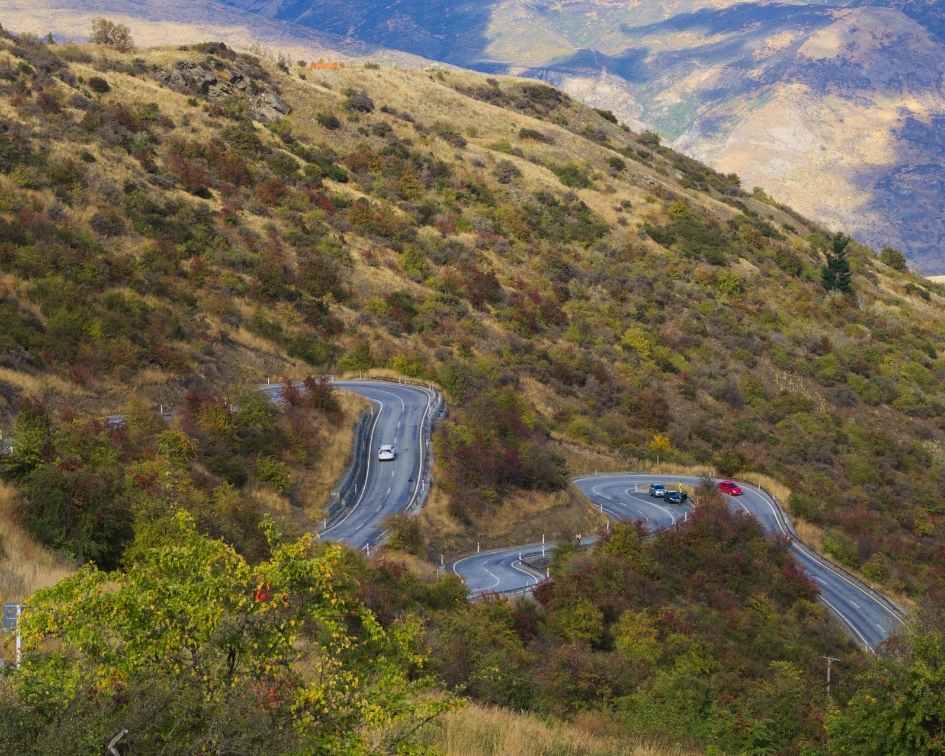
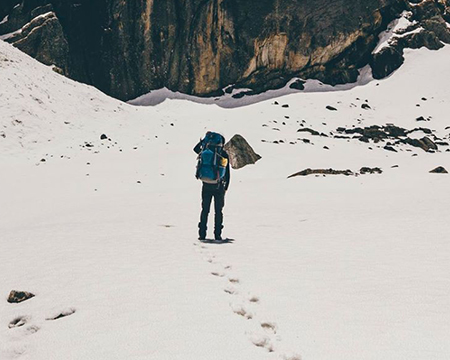
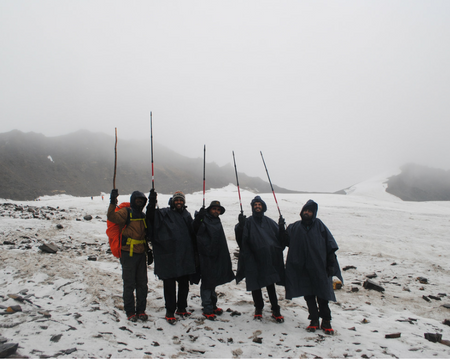
Similar Adventures
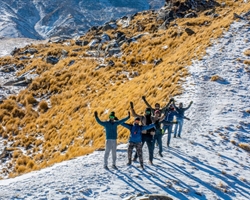
Kuari Pass Trek
The most scenic winter trek for beginners
Uttarakhand
5 Days
BRS 3
3876 m
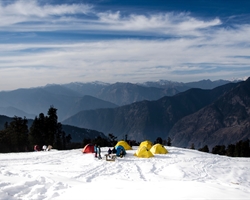
Brahmatal Trek
The Best Beginners' Trek in Uttarakhand
Uttarakhand
6 Days
BRS 3
3856 m
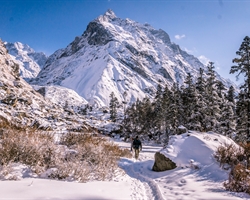
Har ki Dun Trek
A Gorgeous River Valley Trek for Beginners
Uttarakhand
7 Days
BRS 3
3500 m
